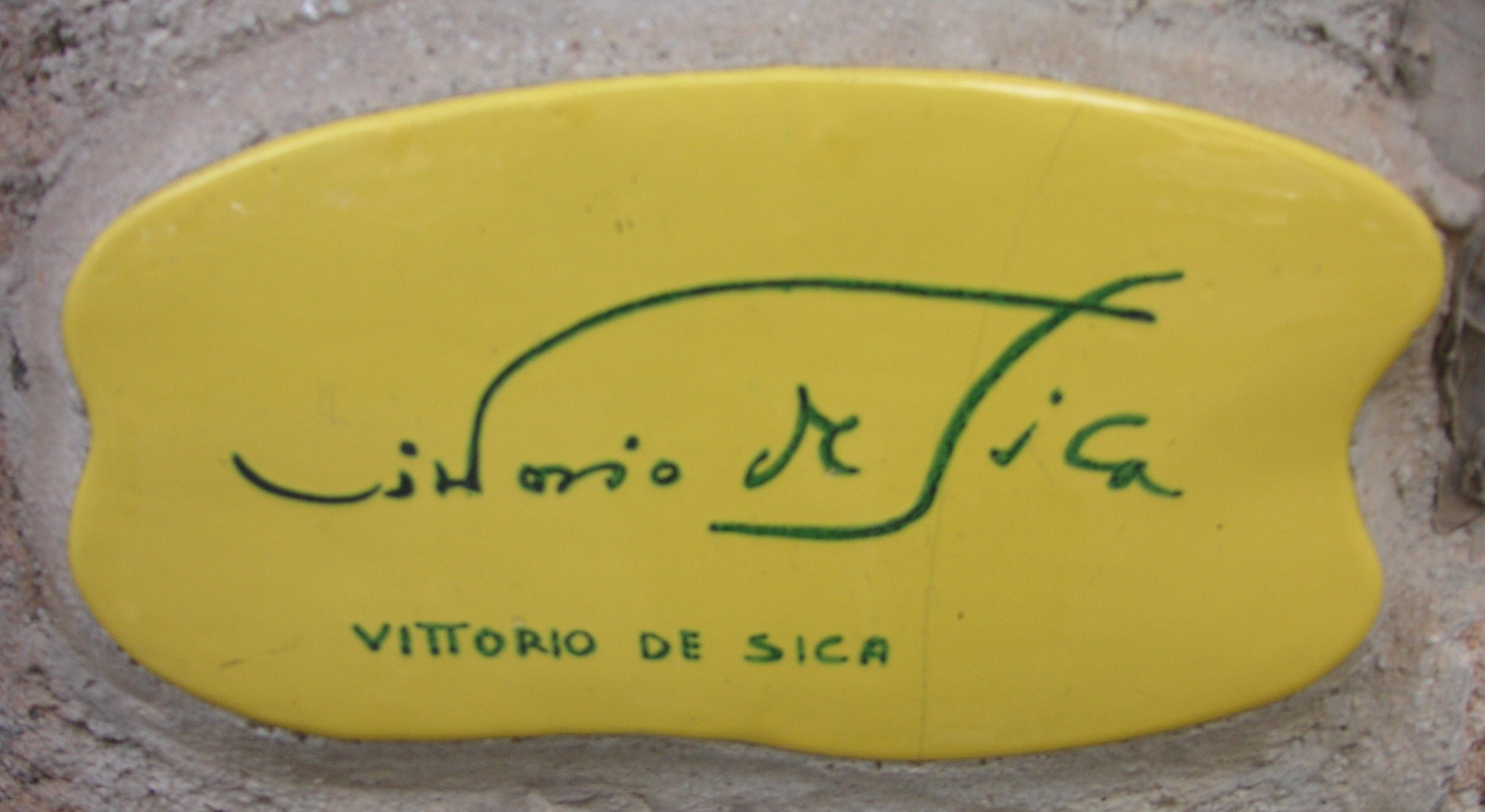Vittorio De Sica’s works come to San Francisco this month thanks to the Cinema Italia SF, a project of collaboration between Luce Cinecitta and the Italian Cultural Institute created by Amelia Antonucci. De Sica is considered the “maestro del cinema” who has been able to depict Italy in all its beauty as well as its problems through cinematography. Able to run this partnership with the Castro Theater for the third year in a row, Amelia Antonucci, who served as the Director of the Italian Cultural Institute of San Francisco, talked to us about the third edition, explaining how it will be similar to the previous ones in the way it presents some of the most known Italian masterpieces. But, at the same time, it can be considered different for bringing the challenge of attracting viewers with a full series of movies, in one single day-screening on September 26. The four movies will be presented in collaboration with of The Jewish Film Institute, the AJC and other local Jewish organizations. Another plus will be the Special guest, actor Lino Capolicchio, the star of “The Garden of the Finzi-Continis”,
How is this year’s edition different from the previous ones?
The program is the same to last years: CinemaItalia SF, in its the third edition, is presenting the best of classic Italian cinema in San Francisco, produced by Luce Cinecittà (the Italian State Agency for the promotion of Italian Cinema abroad), in partnership with the Italian Cultural Institute of San Francisco, under the auspices of the Consul General of Italy. Same team and same sponsors. This year, we have a new presenter sponsor: Centro 39, a local destination boutique for Italian fashion. We are growing stronger in partnership and attention from the public.
Why did you choose De Sica’s works for this edition?
De Sica is a film director that I consider very close to my heart and to my Neapolitan origin. It was a delightful coincidence to find out from Cinecittà that this year the De Sica program was travelling around England and the US. We were very lucky to have these wonderful four titles available for us in San Francisco, after London, Toronto, Washington and New York. We are the only West Coast location for the series.
Which kind of reaction would you expect from the audience?
My hope is to generate surprise and delight. Vittorio De Sica is well known among the cinephiles as the Italian neo-realistic legend, author of Bicycle Thief and Shoe Shine and not so much as the warm, funny and human author of the four titles presented in this edition.
Why do you think is important for people to watch De Sica’s movies?
The rich array of characters and the sensibility that De Sica pours in the protagonists of his stories, Cesira from La Ciociara, the six sketches of The gold of Naples (Teresa the prostitute married for a vow, Toto, the clown exploited by a gangster); the pizza seller (Sofia) loosing her husband’s ring; the gambler Count Prospero B. defeated by a kid; the “professor” Ersilio Micci, a “wisdom seller” Filumena in Marriage Italian Style and finally Giorgio and Micol’s impossible love in The garden of The Finzi-Continis takes us on an unexpected ride among our humanity and the never-changing differences and similarities of our society. We laugh, we cry, and we grow better together.
Which aspects about Italy do you think they represent the most?
De Sica represents the Italian humanity made of victories and defeat, made of humor and sadness. No author better than him could portray the variegate kaleidoscope of this humanity.
If you could choose, which movie would you suggest the viewers to watch?
It is hard to say but I feel like recommending the viewers to watch The Garden of the Finzi- Continis. It is a movie taken by a masterpiece novel by Giorgio Bassani. De Sica could recreate, through images, the same magical atmosphere that we felt reading the book and added a special veil of poetry making it one of the kind film. It won the 1972 Academy Award for best foreign picture. The copy that we are screening at the Castro is a brand new restored copy made by Italy’s L’immagine ritrovata lab in Bologna and Rome’s Studio Cine, funded by Italian fashion label Antony Morato in collaboration with Istituto Luce-Cinecittà and Vogue magazine; it also marks the 70th anniversary of the liberation of Auschwitz.
Do you have an idea for next year’s edition?
I have a secret dream to present a series dedicated to a wonderful actress: Anna Magnani but it is still a dream. We are discussing also to expand the collaboration with Istituto Luce Cinecittà and The Italian Cultural Institute to present contemporary Italian cinema along with the classic cinema.
CinemaItalia SF will be on Saturday, September 26 at the Castro Theatre in San Francisco with four movies screening. For info and tickets, visit www.cinemaitaliasf.com






























